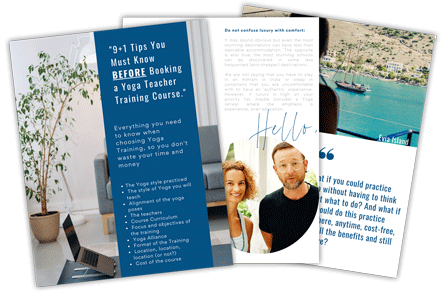Though everyone has the potential to control their own thoughts, there are only a few individuals who actively try to manage them. Unfortunately, having a lack of control over your own thoughts can be detrimental, as 80% of your thoughts in a day will be most likely negative. The foundation even discovered that 90-95% of these thoughts are recurring, and can span over long periods of time.
Instead of letting negative thoughts take over, you can harness your potential and learn how to manage them through meditation. As a beginner, you can overcome common meditation challenges and have a smoother practice. Here are the best meditation techniques for beginners.
In this article:
1. Focus on counting your breath
Meditation requires concentration so that you can free yourself from your thoughts and focus on the present moment instead. Unfortunately, many beginners are used to being restless, making it difficult to sit still and focus.
So if you struggle with focusing, the founder of the meditation app MyLife recommends that you count each breath. By concentrating on counting your breaths, you can take yourself out of your negative thoughts and anchor yourself on something that’s easy to follow.
You can also slow down your heart rate and reduce your stress-induced thoughts by doing 2-4 counting. This breath work requires you to inhale for 2 counts, and immediately exhale for 4 counts.

2. Relax in a comfortable position
A full lotus sitting position is grounding and calming for many meditation practitioners. However, this pose can be pretty uncomfortable for beginners (if not unachievable) and adults experiencing chronic pain.
As an alternative, PainFreeWorking.com highlights that you can maintain your posture and relieve body pain through ergonomic furniture. These chairs are typically used to provide lumbar support for professionals who need to work long hours, but novice meditators can also use these as you begin your minutes-long practice.
On the other hand, beginners who have chronic conditions like fibromyalgia can adopt a bolster-aided lying position for meditation. The bolster will support your head and spine so that you can fully relax while meditating.
You might also like to read: 10 top yoga schools in Europe in 2023

3. Visualize using guides and music
Visualization is a meditation technique that can help induce positive feelings about a person, place, or even a goal. This technique has a bit of a learning curve though, given that you’ll need to harness your senses and imagination to connect with the emotion.
Understandably, it can be hard to focus on your senses, especially if you’re feeling physical pain. As such, PsychCentral.com recommends that you use music in guided meditation sessions to experience improvements in your pain perception. Music tends to be soothing to the ears, which is why it’s become effective for pain relief.
Apart from using music, you can also use a guided-imagery recording to harness your senses for anxiety and even insomnia. Through these descriptive guides, you’ll find it easier to create visual cues within your thoughts.
You might also like: How to choose the right Yoga Training for you

4. Use meditation apps
It can seem difficult to find time for a 15-minute meditation session when you’re still starting out. However, it will be easier for you to sustain your meditation practice if you use meditation apps with short, guided sessions.
To illustrate, you can use the free UCLA Mindful app and start with a five-minute meditation session. Once you are able to integrate meditation into your daily routine, you can slowly increase the sessions to ten or even fifteen minutes.
Aside from doing five-minute sessions, you can also use Calm or Insight Timer for sleep meditation. Their meditation sessions are designed to guide you as you go to sleep, so you can simply listen to them during bedtime.
You will be able to encounter a few roadblocks at the start of your meditation practice. Through the right techniques, you can prepare your body for the session and slowly train yourself as you get used to the meditative flow.
You might also like The ultimate guide to Choosing the best yoga teacher training in India
Written by Aliyah Trish Claxton
Exclusive for alphayogaschool.com
9 Important Tips to Know Before Choosing a YTT






The importance of yoga and meditation in everyday life cannot be overstated. Because it is a great stress reliever. I enjoyed reading this blog. Well explained. It would be a good idea for us all to take yoga classes. These are wonderful things that you shared with us. Thank you.